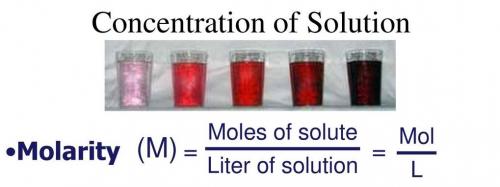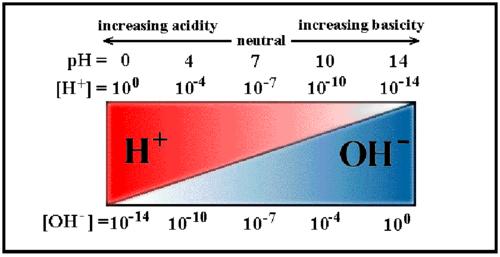 2
2 option 4 =4.505 g/cm³
Explanation:
Density:
Density is equal to the mass of substance divided by its volume.
Units:
SI unit of density is Kg/m3.
Other units are given below,
g/cm3, g/mL , kg/L
Formula:
D=m/v
D= density
m=mass
V=volume
Symbol:
The symbol used for density is called rho. It is represented by ρ. However letter D can also be used to represent the density.
Given data:
Mass of cube = 162.2 g
density = ?
Volume = 6cm× 3cm×2cm = 36cm³
Solution:
d= m/v
d = 162.2 g/ 36 cm³
d = 4.505 g/cm³
 2
2 option 4 =4.505 g/cm³
Explanation:
Density:
Density is equal to the mass of substance divided by its volume.
Units:
SI unit of density is Kg/m3.
Other units are given below,
g/cm3, g/mL , kg/L
Formula:
D=m/v
D= density
m=mass
V=volume
Symbol:
The symbol used for density is called rho. It is represented by ρ. However letter D can also be used to represent the density.
Given data:
Mass of cube = 162.2 g
density = ?
Volume = 6cm× 3cm×2cm = 36cm³
Solution:
d= m/v
d = 162.2 g/ 36 cm³
d = 4.505 g/cm³
 7
7 I answered Number 4 (Solids and Elasticity)
Explanation:
Part a)
If a weight of 10 N stretches a certain spring 3 cm, a) Determine the spring constant k.
Solution:
To determine the spring constant we use the formula F = k x (X)
where ,
F is the force applied in this case 10 N
x is the displacement of the spring’s end from its equilibrium position in this case 3 cm

Part b)
b) Determine how much stretch will occur if you double the weight with a force of 20 N?
Solution:
If we double the weight to 20 N we need to find the need to find the new stretch of the spring which is x. But we know the spring constant which is k so it becomes,

So we can see that if we double the Force the stretch is also doubled thus showing us a direct variation as seen in the formula F = k x (X)
Part c)
c) Using g=9.8 m/s^2 determine the mass of the 10 N weight and round your answer to 3 significant digits.
Solution:
The formula of weight is,

where,
w is the weight of the object in Newtons (N) which is 10 in this case
m is the mass of the object in kilograms (kg) we to need to find in this case and,
g is acceleration due to gravity which is constant 9.8 m/s^2
so now,

 7
7 I answered Number 4 (Solids and Elasticity)
Explanation:
Part a)
If a weight of 10 N stretches a certain spring 3 cm, a) Determine the spring constant k.
Solution:
To determine the spring constant we use the formula F = k x (X)
where ,
F is the force applied in this case 10 N
x is the displacement of the spring’s end from its equilibrium position in this case 3 cm

Part b)
b) Determine how much stretch will occur if you double the weight with a force of 20 N?
Solution:
If we double the weight to 20 N we need to find the need to find the new stretch of the spring which is x. But we know the spring constant which is k so it becomes,

So we can see that if we double the Force the stretch is also doubled thus showing us a direct variation as seen in the formula F = k x (X)
Part c)
c) Using g=9.8 m/s^2 determine the mass of the 10 N weight and round your answer to 3 significant digits.
Solution:
The formula of weight is,

where,
w is the weight of the object in Newtons (N) which is 10 in this case
m is the mass of the object in kilograms (kg) we to need to find in this case and,
g is acceleration due to gravity which is constant 9.8 m/s^2
so now,



Answer:
Taking into accoun the ideal gas law, The volume of a container that contains 24.0 grams of N2 gas at 328K and 0.884 atm is 26.07 L.
An ideal gas is a theoretical gas that is considered to be composed of point particles that move randomly and do not interact with each other. Gases in general are ideal when they are at high temperatures and low pressures.
The pressure, P, the temperature, T, and the volume, V, of an ideal gas, are related by a simple formula called the ideal gas law:
P×V = n×R×T
where P is the gas pressure, V is the volume that occupies, T is its temperature, R is the ideal gas constant, and n is the number of moles of the gas. The universal constant of ideal gases R has the same value for all gaseous substances.
Explanation:
In this case, you know:
P= 0.884 atm
V= ?
n=  0.857 moles (where 28 g/mole is the molar mass of N₂, that is, the amount of mass that the substance contains in one mole.)
0.857 moles (where 28 g/mole is the molar mass of N₂, that is, the amount of mass that the substance contains in one mole.)
R=0.082
T= 328 K
Replacing in the ideal gas law:
0.884 atm×V= 0.857 moles× 0.082 ×328 K
×328 K
Solving:

V= 26.07 L
The volume of a container that contains 24.0 grams of N2 gas at 328K and 0.884 atm is 26.07 L.


It will provide an instant answer!
